Are You Seeing What I’m Seeing featuring artwork developed through collaborations between artists and scientists.
16 – 25 June 2022
Art + Design Gallery, University of Hertfordshire
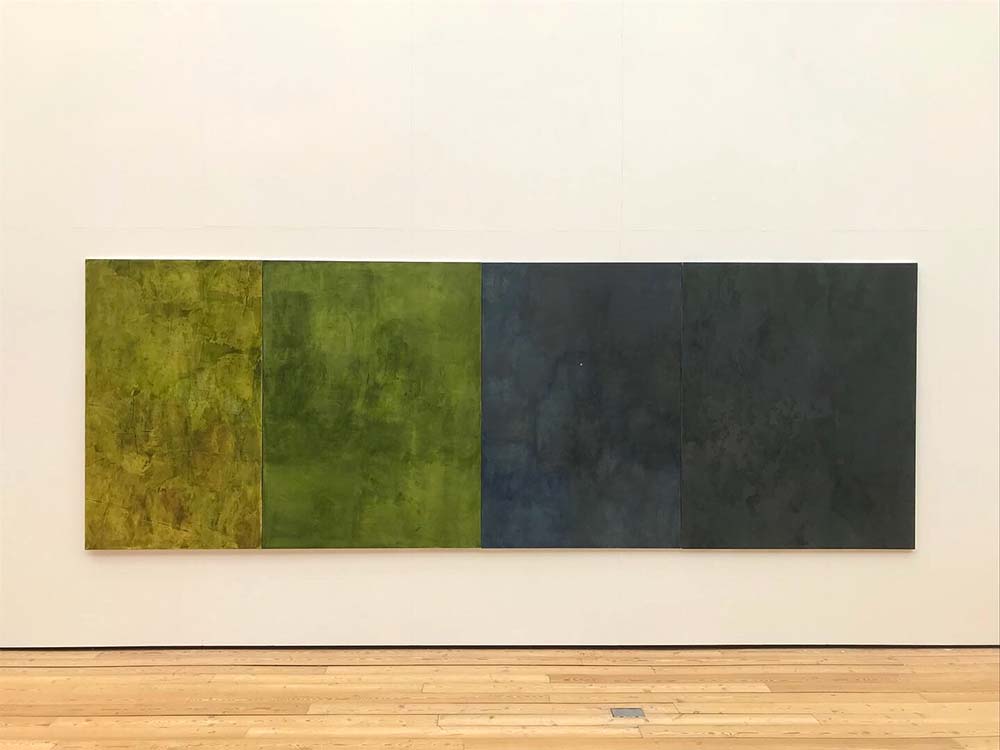
oil on canvas, miniature light bulb, electrical transformer, 167 x 482.44 cm
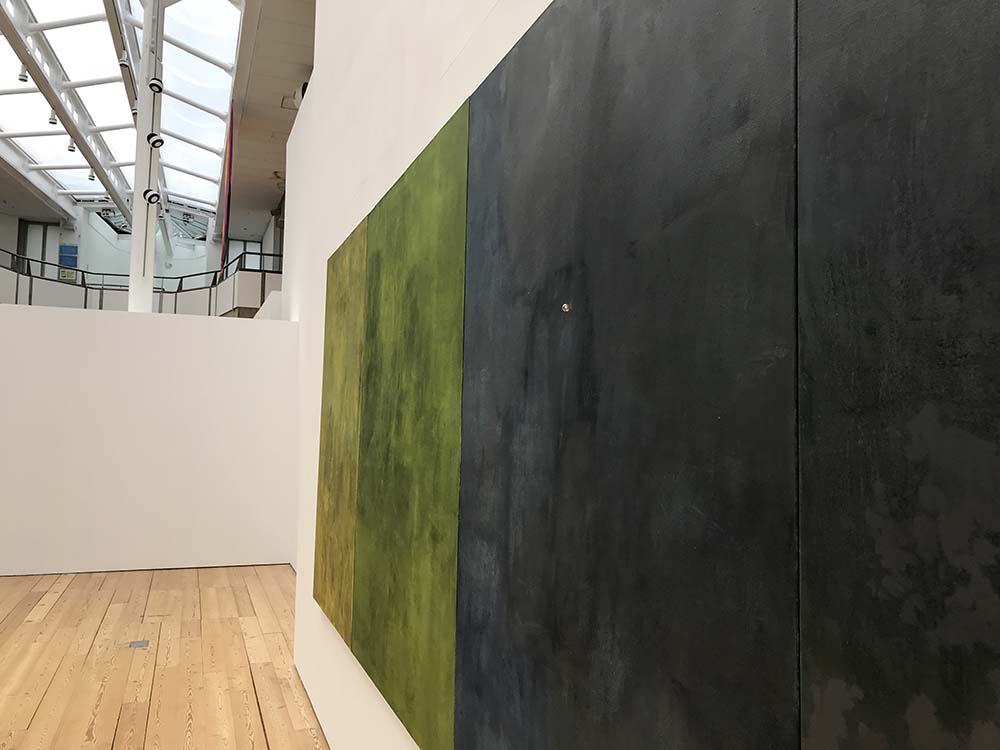
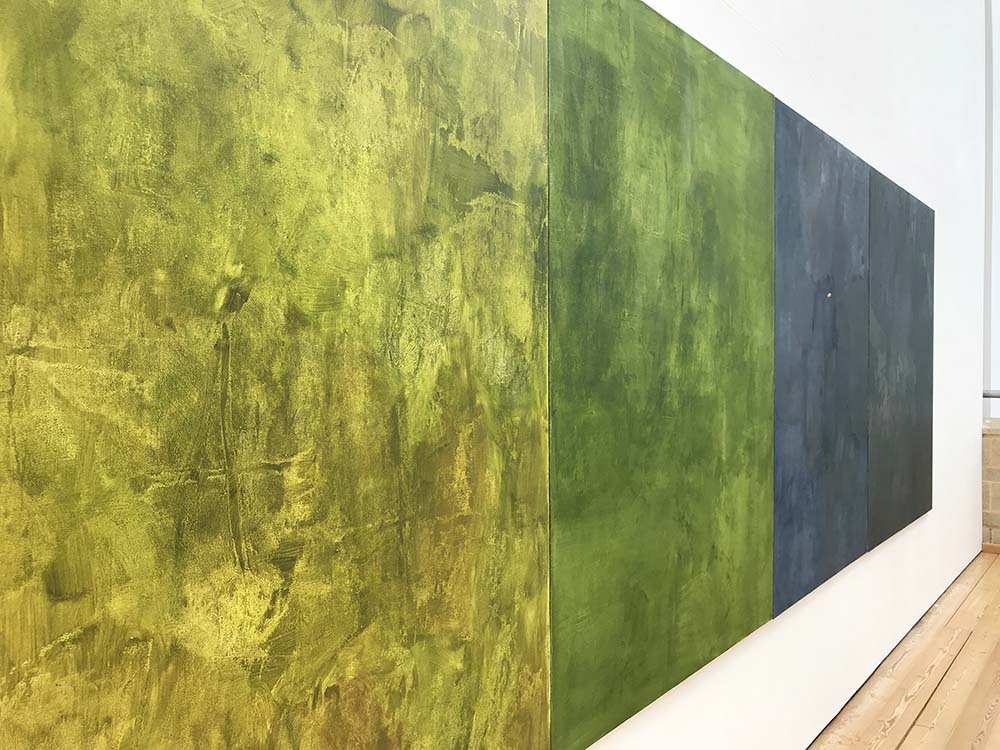

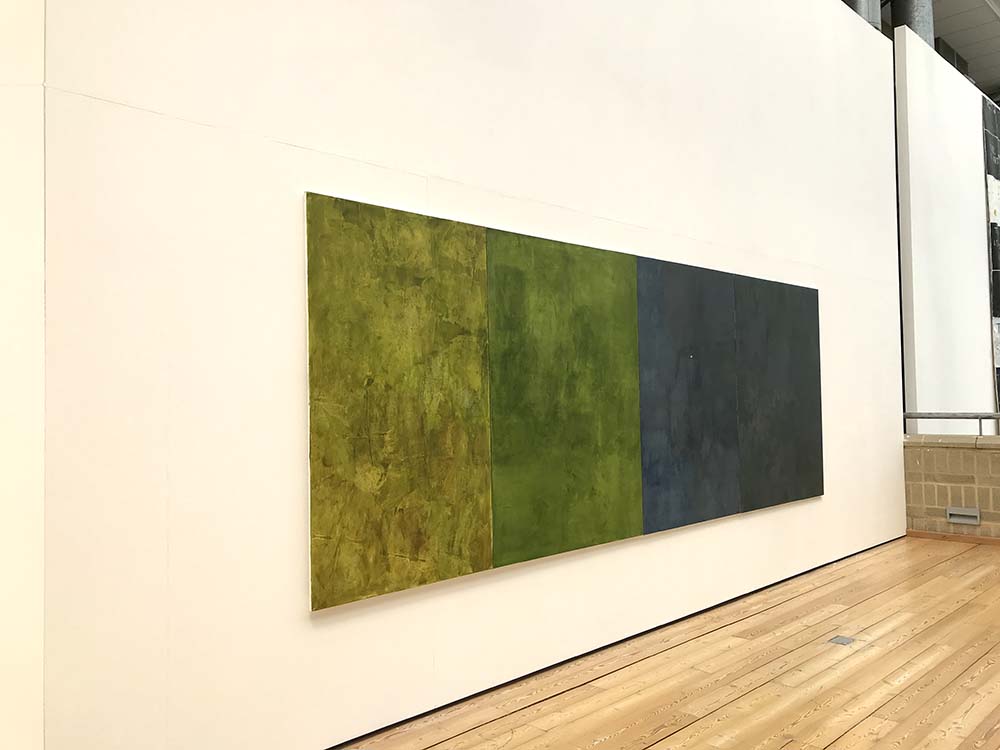

GHOST ACRES
Developed from a collaboration between Alison Dalwood and Dr Keith G Davies FLS FRSB, Associate Professor and Applied Nematologist, School of Life and Medical Sciences, University of Hertfordshire.
The term “ghost acreage”, first suggested by the ecologist Georg Borgström is used to describe the displaced consumption of resources on which Western society depends. The artwork Ghost Acres is inspired by the idea of these unseen lands which are consumed and depleted, yet invisible to us. I explore the issue between invisibility and visibility, drawing attention to what is unnoticed or overlooked.
Each coloured panel of Ghost Acres represents an estimate of measure of areas of land on which a single Western urban dweller depends: cropland, pastureland, other land, woodland, charting the proportion and statistical acreage of these ‘ghost acres’ in relation to each category of land use. The urban dweller is signalled by the miniature light bulb.
In my current work I am focussing on endangered ghost resources, outsourced in ‘foreign’ lands and conflating past and present exploitation. For example, Ghost Acres is essentially a metaphor, which originated in ecological science and is translated into the language of painting.
I explore how painting has the potential to encompass a horizon and an almost immersive environment. Working with oil mediums, scumbled and layered transparent glazes and using a process of subtraction and ‘unmaking’ where marks are erasing through pressing into the surface of the canvas, these processes reflect both my emotional connection with the subject matter and visual cues, for example camouflage observation of natural phenomena including processes of decay.
These paintings conflate foreground and background and are an expression of my fascination with the surfaces which we encounter in the world and how colour has the potential to deeply affect us. The initial concept which inspired this work is the idea of a place, a land you can imagine but you cannot see, and on which we depend.
Like many of my works, the Ghost Acre series also consciously brings liminal space and the viewer in to play and focusses on perception, linking the site of the work with the viewer’s imagination and the idea of a palimpsest, which is a phenomenon very special to painting, essentially a temporal process, bringing together on one surface a series of actions (marks, brushstrokes) made at different times and simultaneously referring to past and present, space and time and made sense of by the physical encounter with the viewer.
Around 1950 the proportion of the global population living an urban existence was around 30 percent, 70 percent being rural. This rose to around 50: 50 by 2011, and by 2050 it is estimated the proportions will have reversed. The concept of ghost acres refers to the fact that the urban population relies on agricultural production systems that originate far from their urban dwelling place and from which they are disconnected. Keith Davies who regularly visited New Delhi and other large conurbations to discuss food security through crop protection, became increasingly conscious of the rural/urban divide. In a conversation about the interactions between art and science the term ghost acres came up and it became apparent that the word ghost was very different between the scientific and artistic imaginations. This collaboration grew out of that discussion.
The concept of Ghost Acres is referred to by Garrett Hardin in Living Within Limits; Ecology, Economics and Population Taboos, published by OUP 1993: “Since most of the acreage the average citizen “occupies” is out of sight and out of mind, the agricultural geographer Georg Borgstrom suggested in 1961 that we call it “ghost acreage.” The essential life of an educated urban dweller, from birth to death, is lived out on ghost acreage.”
Cropland 1.9 acres
Pastureland 2.4 acres
Woodland 2.6 acres
Other land 2.2 acres
Dweller of Urban Manhattan: 435 square feet
This project aims to make ghost acreage tangible and visible and lead to appreciation of the full scale of the city dweller’s dependency on acres of land in the world beyond the city: “Since he is deficient in meaningful experiences with the sources of his being”. P123 Garrett Hardin, Living Within Limits.
Four locations are represented in Ghost Acres charting the statistical acreage in relation to each category. Each of the series of four paintings assimilates visual aspects of one of the environments listed in allusions to space. These works are optical, perceptual interpretations of visual attributes of these habitats but the pigment itself is very clearly two-dimensional colour on a surface. The paintings appear to focus on light, and light transitioning from day to night and from the twilight of Other land to the darkness of Woodland. The board expanses of colour darken from left to right as if the light is fading and the different formats of each work suggest intervals of time. Layers are intended to give depth and perspective, while turning flat and fixed areas of colour into something unsettling – a wall of colour. For each subject I have worked with combinations of layers of almost the same colour, which has the potential to create depth and particular effects of light at different times of day. The pin-prick of light given out by the tiny light bulb set against the blue twilight painting: Other land, represents the urban dweller.
Four locations are represented in the analysis of Ghost Acres and for these initial studies I experimented with camouflage appropriate to each environment. As the work moved forward, the idea of camouflage became less important.
In these studies patterns, layers and spaces refer to natural phenomena – for example: light, shadow, growth, decay, emergence, solution and the process of formation and transformation; elements emerging out of darkness and dissolving.
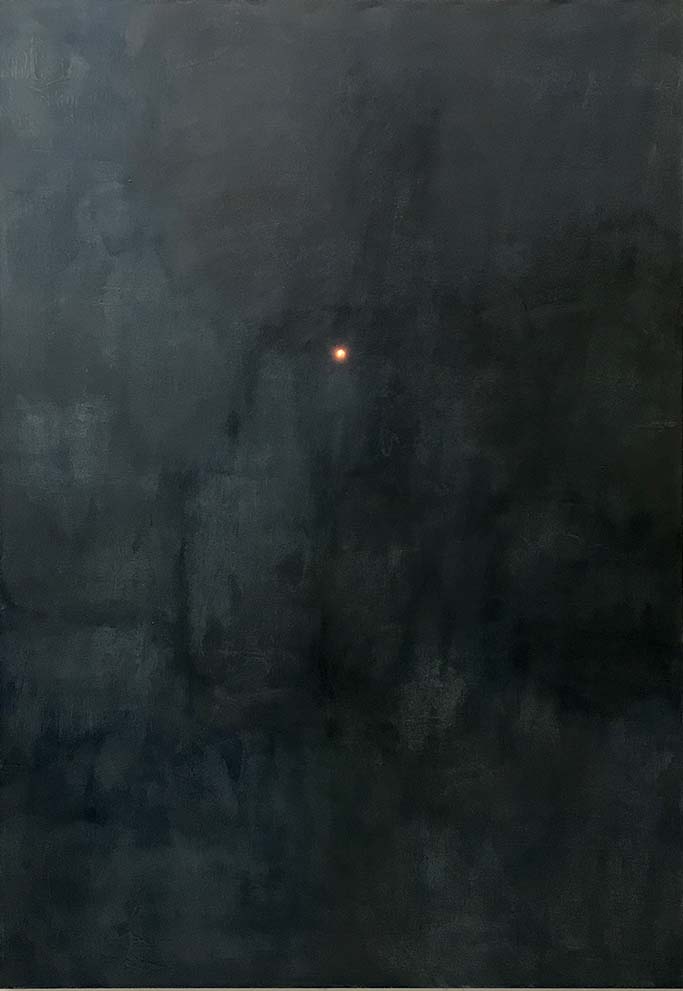
oil on canvas, miniature light bulb, electrical transformer, 167 x 115 cm

oil on canvas, 167 x 126 cm
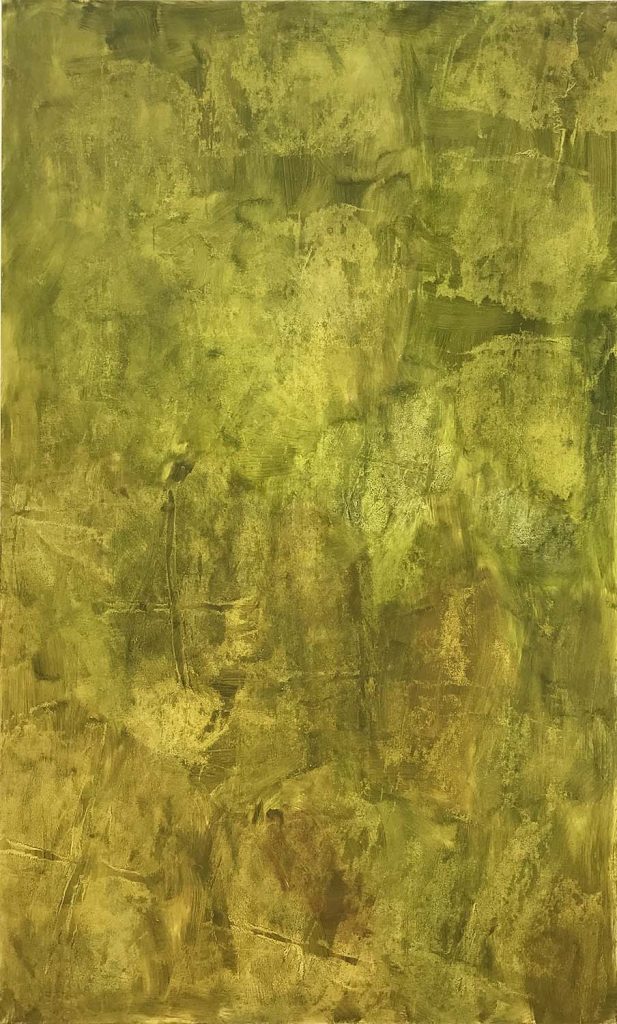
oil on canvas, 167 x 100 cm

oil on canvas, 167 x 137 cm